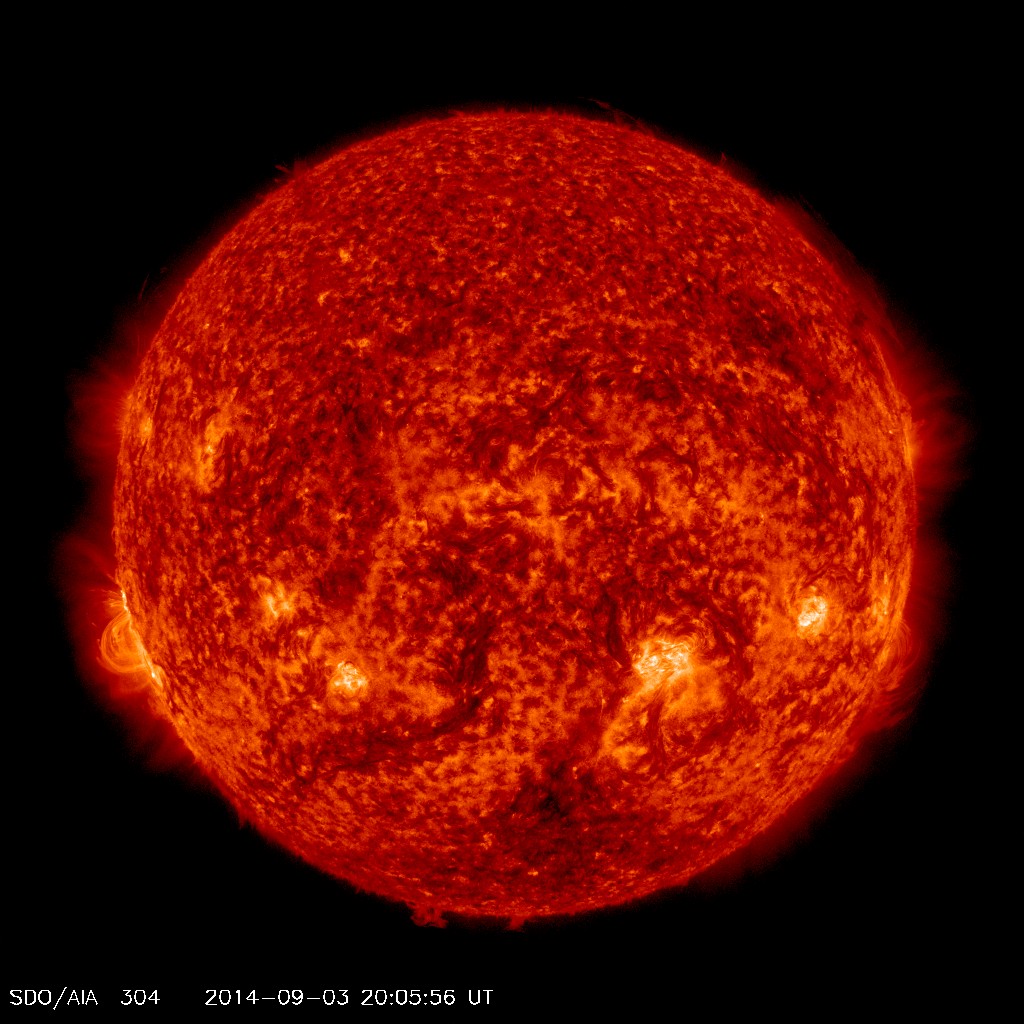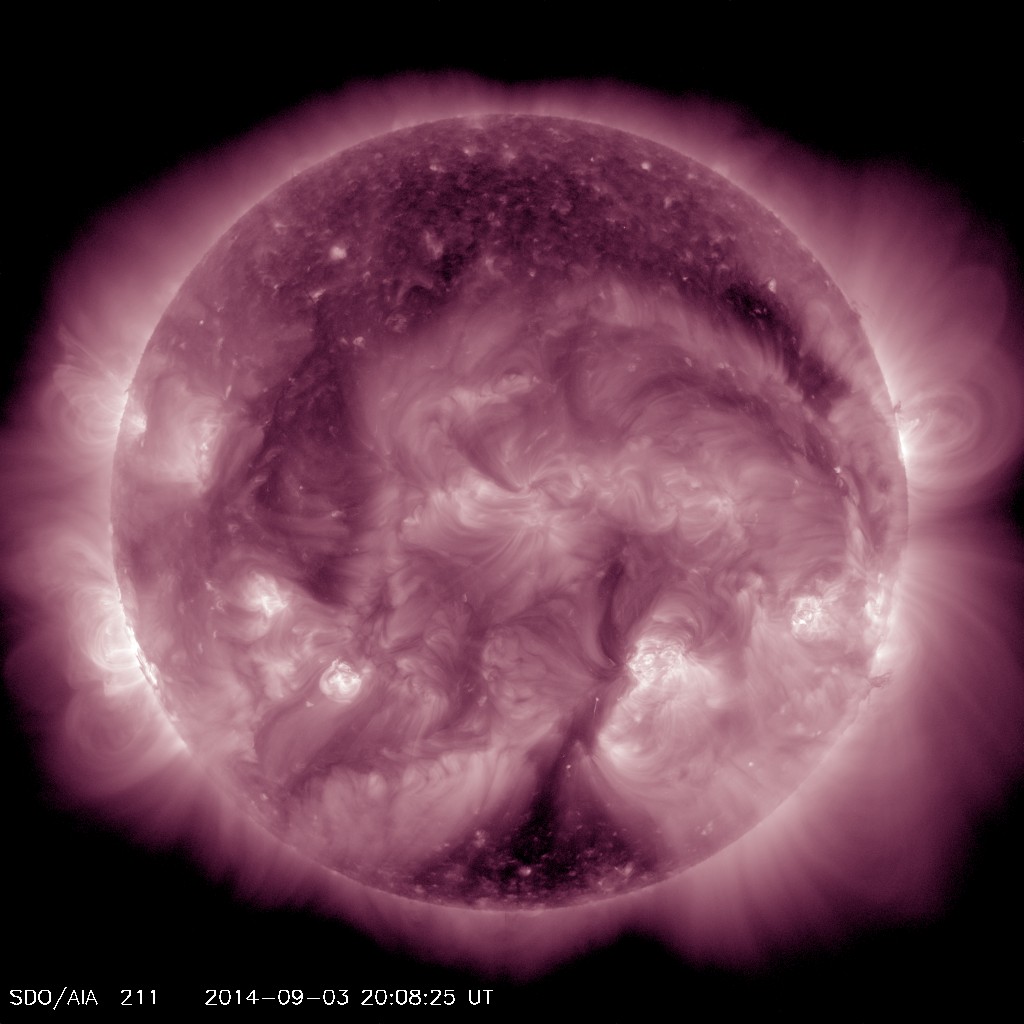September 3, 2014 8:00 pm
Here Comes the Sun…
When was the last time you took a good, close look at the Sun?
You could just walk outside and look up at the sky – please don’t do that without eye protection – but how much can you really learn from that?
It seems like meteors, asteroids and comets get all the attention from the cosmic paparazzi these days. After all, who isn’t enthralled by Rosetta’s images of Comet 67P?
Then there’s Saturn, which has been getting its gorgeous close-ups via Cassini for a decade now.
Even Neptune’s grabbed a couple of headlines recently, thanks to New Horizons, which crossed its orbit on the way to Pluto in July 2015.
But poor old Sol is a poor old soul, ignored by the Hubble, and the Keck, and only making it into the mainstream news when it lashes out and threatens to wipe out all electronic activity on Earth with a solar flare, or so the news would make it seem.
So what’s a sun worshipper to do?
Head on over to NASA’s SDO website for more fun in the sun than you can get here on Earth now that summer’s on the way out.

The Sun, taken earlier today, 9/3/14, in a wavelength of 304 angstroms, by the SDO.
First of all, right there on the home page are stunning shots taken within about 15 minutes or so, depending on when the latest images are uploaded. You can see images taken across a variety of wavelengths, each of which is better for observing different characteristics. For instance, AIA 304 is a wavelength of 304 angstroms (extreme ultraviolet) “especially good at showing areas where cooler dense plumes of plasma (filaments and prominences) are located above the visible surface of the Sun. Many of these features either can’t be seen or appear as dark lines in the other channels. The bright areas show places where the plasma has a high density.”

Or perhaps you prefer 211 angstroms to better view solar flares and CMEs?
Whereas AIA 211 “highlights the active region of the outer atmosphere of the Sun – the corona. Active regions, solar flares, and coronal mass ejections will appear bright here. The dark areas – called coronal holes – are places where very little radiation is emitted, yet are the main source of solar wind particles.”
These images are the work of the Solar Dynamics Observatory, a sun-pointing, semi-autonomous spacecraft in an inclined geosynchronous orbit that allows nearly continuous observation of the Sun. It’s connected to a single, dedicated ground station. It uses a suite of instruments to provide image resolution that’s twice the resolution of the STEREO spacecraft and 4 times the resolution of the SOHO spacecraft.
Elsewhere on the website you can find detailed descriptions of the SDO instruments, the spacecraft, the mission, the team that runs the show, and even real-time tracking that shows where the SDO is at any given moment.
So the next time you’re wondering what’s up with the big ball of plasma that makes all life on Earth possible, just go to http://sdo.gsfc.nasa.gov/ and see for yourself.
You won’t even need to squint.
That’s it for now. Keep Looking Up.
–Jeffrey Simons
Get the most out of StarTalk!
Ad-Free Audio Downloads
Priority Cosmic Queries
Patreon Exclusive AMAs
Signed Books from Neil
Live Streams with Neil
Learn the Meaning of Life
...and much more

 Become a Patron
Become a Patron

